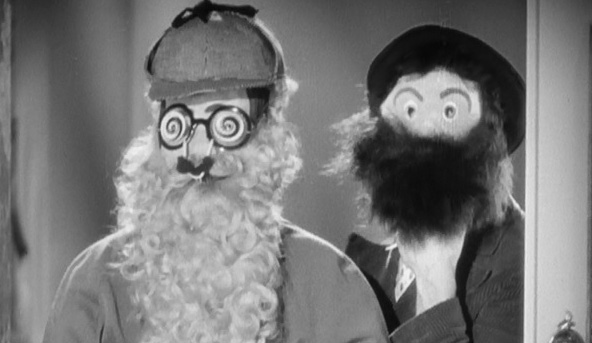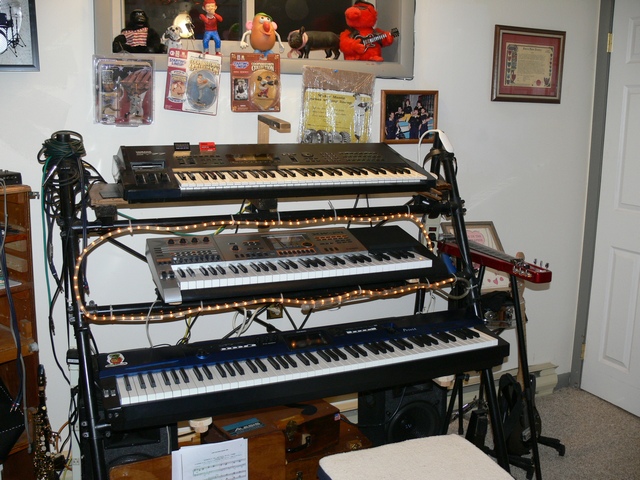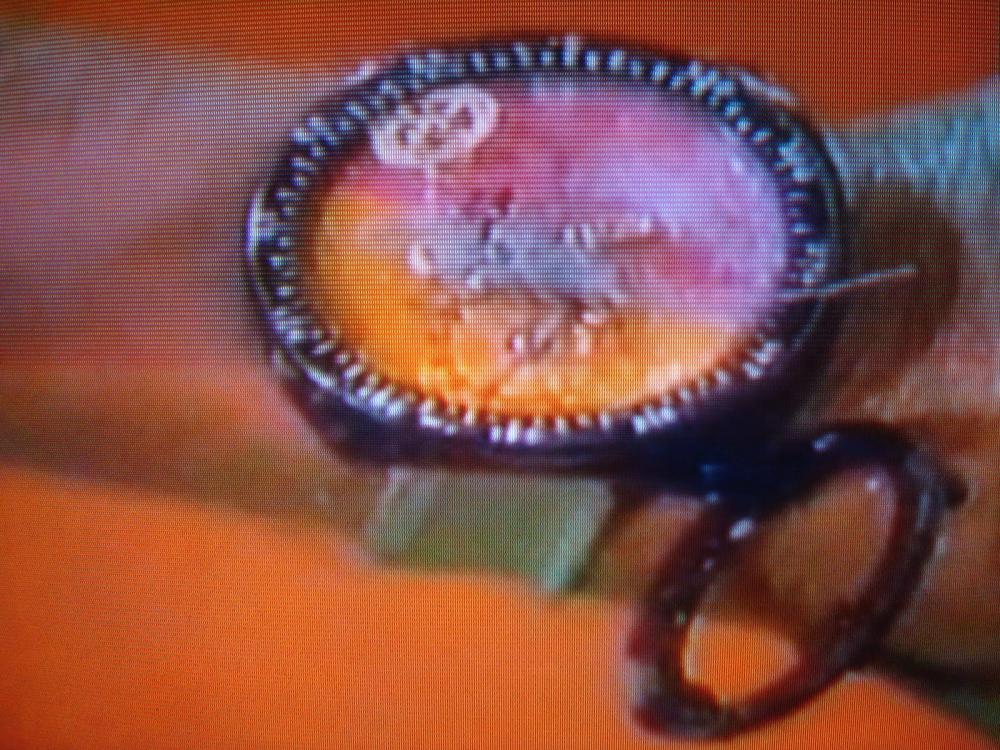-
Posts
4,146 -
Joined
-
Last visited
Content Type
Profiles
Forums
Downloads
Everything posted by Jokeyman123
-

Emagic Sound diver 3.0.5.4 final for Casio CZ's
Jokeyman123 replied to Jokeyman123's topic in CZ Series
Gearspace has some interesting current info about Sound Diver-good thread for Windows 10 users. https://gearspace.com/board/music-computers/1334549-sounddiver-2021-a.html -
I was just perusing (advanced word of the day) my dozens of software programs on my windows machines and came across something I had completely forgotten-EMagic Sounddiver. You know its offspring-Logic pro. I'm posting this as the final original release is available to download as an archive-I have it, am running it on a Windows 7 32-bit machine and among the hundreds of devices it supported (mostly older stuff now) it supported several of the Casio CZ's. https://archive.org/details/emagicsounddiver3.0.5.4 According to this link-it will run even on Windows 10 x64, amazing for such an old program. What is it? Hard to describe in less than 1000 words, but basically, its a patch editor/librarian but is way more than this. Unfortunately, unless you're pretty experienced with editor/librarians this may look terribly complex, but if you hook up something it recognizes with midi and your computer-it configures whatever that is, pretty powerful. I have no CZ's anymore so can't be sure, but thought some of you might be interested. And the manual....if you want to learn anything and everything about sysex commands and beyond, this manual is like a textbook history of what sysex is for and what you can do with it. PS-there is a list of electronic music devices it supported before it disappeared-also supported effects devices, certain pedals, samplers. i am going to test it on a few other instruments I do have, but not the Casios. Might even midi connect a few that are not listed-just to see what happens (living dangerously now)
-
You could do this with an oscilloscope-there are some less expensive smaller digital scopes on amazon, eBay or elsewhere if you don't have one. If you connect the scope leads to the right outputs-it (in theory) should show you the shape of each wave, or possibly at one of the audio outputs. You would have to know where in the circuit the waveforms are being generated initially-possibly as you posted, directly from the CPU which depending on the Casio, I would "guess" are being directly output at the CPU. cyberyogi here in this group might know a little more about this.
-
🤪 I've come close to adding this to my rather voluminous (word of the day) assortment of music making "devices" but I have one big concern. Will Medeli still be around in another year or so? They have been around for a few years-but like some of these "tour-de-force" instruments-Medeli has nothing else quite like this one-will they still support it in the future? I am spoiled-any arranger, if it cannot create a different main variation for each chord quality-yes my Generalmusic SK did this-I'm sure there are others, I don't see much of an upscale improvement over the Casios there, although I am not aware that Casio arrangers can do that either. Some of the acoustic instruments sound...well not quite there for some, others sound very good but then the demos seem to be highlighting the easier sounds to dupe-flutes, percussion but the saxes on this sound cheezy-IMO. And there are not enough sound demos that I could pull the trigger. Many of the orchestral sounds are not quite up to what I'd like to hear too but aren't terrible. Medeli is still upgrading firmware-meaning there are bugs-but at least so far Medeli is addressing these issues but may give up on this sole instrument in time, like so many manufacturers do. I am missing the drawbars which are/were so nice on the other Casios. The acoustic piano sounds "brittle" to my ears-and i listened to the Kris Nicholson demo carefully. Not terrible, but it sounds a little too "tinny" to my ears. and Kris is a good player although with spring action keys for piano.....not so easy to play stride on a spring-action keyboard!!!! Nice Kris.
-
it's the model that is very similar to the MZ-X500. Yes it uses .ZTN format for its tones, but i don't think it is cross-compatible with the tones in the MZ-X500, although I've never tried. Here it is...the top one is a Yamaha SY77, then there is my Casio XW-P1 and the bottom keyboard is the PX-560.
-
The last I looked, there were AKX10 Medelis on www.Reverb.com I will check again. But no Casio MZ's anywhere in the US, used or new.
-
Akshansh...hope you are well first off and most importantly. I connected with your link-sent me to the "Mega" website for large files-and it said "this folder is no longer available". I do not have a CTX to beta-test this, but I would like to take a look at this anyway-I am thinking it might work with my PX560-worth a try and wouldn't that be amazing if it does! The advanced functions of my PX560 also do not allow any editing of the sounds or arranger rhythms-and it is a full arranger keyboard like the CTX series. I understand this was designed for the CTX's specifically-but I like to experiment and you've worked so hard on this software it is certainly worth looking it over.
-
Not exactly sure what you want to create. There are a few ways you can create 2 different playable tones/pitches if I'm reading this right. The easiest is just create a hex layer-you don't have to use all 6 layers-you can just turn 2 on and use those. Use whatever tone you want in each of the 2 hex layer tones, detune to whatever tuning you want and save, from a half-step up 2 I think 2 octaves. Of course this will only work for that hex layer tone, not globally. Another way-but again will be limited to however you set it up...just call up 2 tones in the main menu screen-where you see the 4 choices for upper and lower tones-and detune however you want between the 2 tones in that menu-2 piano tones for example, save in a registration if you always want to call up that combination. OR...edit whatever tone you want to use-and simply tune any 2 oscillators to whatever pitch difference you want and now that tone will always play as a duel pitch sound. there are some factory tones that already do this, not at my PX560 right now so don't remember which specifically. Keith Emerson made this idea popular using fifths for lead tones-a C and G is a fifth apart. I don't recall specifically on the 560, but many of the Casio arrangers have a variety of selections to change your lead or melody tone to play a full chord for each key in dfferent voicings and one of those choices specifically voices only a 2-note harmony-actually not strictly a harmony-I think for imitating pedal steel tones but doesn't allow for independent bending of only one tone out of the 2-but that's another story altogether! I will check my 560 to see if that is an option-I have so many keys I work with, i can't always remember everything they all do...I am currently restoring an Alesis Micron just for giggles....we should all have such problems, eh? 🤪🤪
-
There is a vendor who tore apart apparently a PX560. I think the screen is still on eBay. pricey though-over 100 US dollars.
-
Check my PM. Might work.
-

What music influences your keyboard playing?
Jokeyman123 replied to amaverick's topic in General Casio Discussion
I'm with hant on this-almost everything and anything influences me, my ears are always open. that is the difficulty for me now, there are so many resources, sources styles of music-it is rather overwhelming. found sounds to ancient music to whatever is current-anything that catches my ear as innovative, unique or exceptionally accomplished can be an inspiration. I guess my working with Charles Wuorinen's music and other contemporary musics/composers really changed me around from a typical rock/pop/jazz/classical listener too much more than that-now the world is open. I can listen to a piece now that may have 3-4-5 different stylistic concepts in it-all in 5 minutes! -
Welcome!-0ne of my favorite gigs in years past was in the "Russian Hall" in Singac, NJ where most people there spoke Russian, Ukranian, Polish and fortunately for us a few English speaking. Why did I like this gig? Our accordionist-actually played a Bell Duovox connected to a Leslie-surprising how this could sound like a Hammond C or B-3-and Stevie could play any song they threw at us (I was the drummer at these gigs) many of which we never played anywhere else. So they loved us there, and it was an amazingly happy group! Dances I had never seen-i also was friends years ago with several of the Glinkas-a very accomplished dance group who I was fortunate enough to see perform, in another unique park in tuxedo, NY where there was a huge dance hall-and I played gigs there a few times too- was a long time ago, in the 19070's. Hope this translates well. Добро пожаловать! Одно из моих любимых выступлений в прошлые годы было в «Русском зале» в Сингаке, штат Нью-Джерси, где большинство людей говорили по-русски, по-украински, по-польски и, к счастью для нас, некоторые говорили по-английски. Почему мне понравился этот концерт? Наш аккордеонист — на самом деле играл на Bell Duovox, подключенном к Leslie — удивительно, как это могло звучать как Hammond C или B-3, — и Стиви мог играть любую песню, которую они нам бросали (я был барабанщиком на этих концертах), многие из которых мы больше нигде не играл. Нас там любили, и это была удивительно счастливая группа! Танцев, которых я никогда не видел — я также много лет назад дружил с несколькими Глинками — очень опытной танцевальной группой, выступление которой мне посчастливилось увидеть, в другом уникальном парке в Такседо, штат Нью-Йорк, где был огромный танцевальный зал — и я там тоже несколько раз давали концерты - это было давно, в 1970-х.
-
I see that. What bothers me a bit I guess, is that in the marketplace categorizing the 2 keys (560 and 5S) many of these instrument's other features (not by the musicians who play them) are overlooked, but at least to me with several workstations to create with and compare, have definite pluses that most other stage pianos just do not have. almost as though Casio has created a unique pair of "hybrid" stage pianos, just as the MZ-X, classified as strictly an "arranger" keyboard, except for those who know, is much more than just an arranger. I'd been often tempted to try one of the more expensive PSR Yamahas (I've owned a few) and always shy away as even their most expensive boards seem to lack something the Casios managed to fit in. Why I keep my eye on Casio and whatever they come out with. I've never seen a PSR with slide pots to control organ sounds and other functions for example. even many workstations may have layers/mixes, but nothing like a hex layer function, except my old Equinox. The top of the line workstations Like the Kurzeils, Montage, fantoms have this slide pot function, but where can I get an under 1000 synthesizer keyboard that has these-except with the WK/CTK's and the MZ and XW synths. To gearheads like me, these are important. and Casio seems unique in bringing something to the table that other manufacturers don't take the chance with-such as the new CTS vocal processing board. And in the past-their wind and guitar controllers which are still viable-and only Roland has anything similar at least currently. Economically not necessarily a good time to introduce luxury items, but Casio introduced the vocal synth anyway.
-
I just came across something a little unusual, to me at least. I often read reviews of various keyboards, workstations many technological things-I just like to learn something new whether the tech is old or just introduced. I discovered that for the PX560, there a relatively few user group reviews of this board-only the piano user groups seem to have the reviews. Typical user review groups-Sonic State, Sound-On-Sound, there aren't any at all, at last that I've come across. Would have been interesting to hear from some folks that typically play/compare and review "workstations"-since in some respects I consider the PX560 to be pretty close to one, and it seems to have slipped under the radar. I have played many workstations, I understand this is still considered a 'stage piano" or something similar-but being that it can edit tones, has a 17-track sequencer (yes missing a few editing features of the "big boys") and a full mixing panel for multitrack work, can save and load quite a bit of info, and has at least a few control knobs that can be used live or for recording-its very close IMO. There are many reviews comparing the piano sounds to other full-blown workstations-but that's all I've found. Anybody up for it? might have to be "numero uno"....me!
-
I don't have my PX350 anymore-but this can be done. Have to use the function button, and the arrow left-right buttons to select the function for changing the volume of the auto-accompaniment, it is listed under "other" functions. It is described on page 45-46 of the manual. Once you have selected auto-accompaniment under the functions settings, use the up/down arrows to change the relative level of the accompaniment while not changing the entire keyboard's volume. A little fussy as to how this is done-you will have to experiment to determine how much you need to change the accompaniment relative to your overall volume setting since the master volume is only controlled by the volume knob.
-
if you do a search here in this group on px560 screen calbration-there is a software program that recalibrates the screen. Do at your own risk, I assume no responsibility if you make things worse! In case you can't find it, here it is. Puts you in test mode. I save everything. Gotta get rid of my Garbage patch Kids cards someday.🤪 Thanks to the original Casio poster who found this. I've tried it just for testing-my screen has been fine-and it caused me no trouble, not too difficult to use. PX-560 Touch Calibration.pdf
-

Rechargeable batteries - why not?
Jokeyman123 replied to Dr. Biegel's topic in WK-6500/6600 - CTK-6000/6200
That's what I am using on alot of music electronics that consume AA batteries like potato chips. These are outboardlithium-ion packs though, and if something uses tip-negative-I make my own barrel adapters that simply reverse the wires. I have a huge collection of barrel adapters in different sizes easily gotten on amazon, ebay or elsewhere. I've been trying out "EBL" lithium-ion 9V batteries which need a dedicated charger, not terribly expensive and I also use barrel adapters with 9V plugs on the other end. If you look these up, the blue ones rate true 9V but only 700mAh, there are some with 1200mAh. I also ordered a newer type of EBL 9V that have a built-in mini-usb charging port-I contacted the buyer just yesterday 9/21/2022- as I am testing these out at only 8.4V, which is either indicating defective batteries-are supposed to be 9V-or a defective seller mis-informing these as 9V when in reality the chemistry might only be allowing 8.4V, and i have repeatedly re-charged these trying several different USB chargers and cables, same result. and listed as 5400mAh-in a 9V pack configuration I doubt that spec. Some of my electronics will not work at all if the minimum voltage doesn't hit 9V. -
Oh please, please please-put these new pianos and key action in a new Casio stage piano "workstation"-a hybrid PX5s/560/s6000/7000-this has already been posted ad nauseum here, but it would be a wonderful thing-add the touchscreen, full synth tone editing and hex layers-17 track sequencer with editing features and a fully programmable mixer section with DSP's. And real-time sliders. if you can beat for example the newest Kurzeil k2700/PC4, this might turn Casio completely at the top of the keyboard foodchain. And sampling-but full sample editing/sample inputs, like my Alesis Fusion (wow I'm asking for alot here). In a lightweight board-could beat the pants off Roland, Yamaha and Korg-maybe add FM and physical modeling???? Now I'm getting crazy. Or maybe the new voice paradigm from the CTS-1000. Casio could call it the PMX/S100000. After all, if Casio could make Chris Elliot's famous "Chronosync 2000" wristwatch which melted in the shower, they can do this!!!! Only kidding, this wasn't a Casio-must have been a Roland, Korg or Yamaha. Well I am jokeyman...so forgive me, this is off-topic.😛
-
Ok, thanks Mike.
-

Retrobrighting Vintage Casio's Keys? (SA-21)
Jokeyman123 replied to timbr's topic in Classic Casio Discussion
To get this retrobrighting right-and i have done it to restore a few musical instruments-just the peroxide alone might not work (I use the kind of jell one might use on your hair-I considered bleaching my hair to match my keys, but then my teeth already matched my older keys-before I bleached them😋 now i'm being silly-but back to my point-I needed to set these out in the sun, with the peroxide paste-and it needs to be made into a formulation that is thick enough not to drip on anything else-i always mask off everything-and not too thick that the sun will dry it out before it works. Even a few hours in our now martian-level sun did it. (No offense fellow space creatures)... I also recall needing to pay attention to the percentage of peroxide in the brand i bought-too little won't work, too much-might damage the plastic, bleach can penetrate if it is too strong a formula. I think I used something like 20% solution.- 4 replies
-
- 1
-

-
- restoration
- sa series
-
(and 1 more)
Tagged with:
-

New Privias August 31 and September 4th?
Jokeyman123 replied to XW-Addict's topic in Privia PX-S7000 / PX-S6000 / PX-S5000
Definitely a cut above for a stage or home digital piano, the wooden keys might make a big difference in playability with the new support structure underpinning, must be quieter, smoother to play at all dynamic levels, I like the internal mechanical design. Very "retro" style to my eyes-almost a 50's-60's furniture vibe, although Japanese design is described. Put this is new keybed and design in a full-blown workstation-now you have my attention, and probably my money! If not, I'll wait for prices on these. If Casio is willing to send me a test model of the S5/7000 for my review..........🤩 Well can't blame me for trying!!!!! -
Look at member posts for the PX560 for mine, but there are others who might have posted some. I listed my .ckf's under the member uploads/downloads for tones, since I couldn't figure out where else to put these that would be easy to find. Not all the tones may match the ctx series-one of the few Casios i don't have, but worked with the older CTK6200 and my even older PX575 as well as my PX560-so should be close to what I originally intended as far as individual tones in each auto-arrangement. Octaves might not always be right and you have to know how to load .ckf files-not sure if the CTX's are backwards compatible with my older .ckf files. Look up Chandler's posts-he compiled the most comprehensive document here for how to convert rhythms. his document can be downloaded from one of his posts-it is the sum of all the work that has been done by several members here going back to the CTK/WK arrangers, too numerous to mention although i need to mention "T" a member who helped tremendously way back in documenting how to work with designing and converting rhythms, how the Casios were designed for auto-arrangements. Jorgen Sorensen is another tremendous resource for working with Yamaha style files, understanding what needs to be done to get these styles to work with other keyboards or software. Nothing directly about Casio but helped me understand some of the difficulties with Yamaha's unique system for auto-arrangers. I've posted the link before here, but here it is again, worth bookmarking if you are working with style conversions... http://www.jososoft.dk/yamaha/software/mdbedit/index.htm
-
You need to look through our posts right here-there is a huge bunch of posts from all the people here at this user group who have done this, including me and how they've done it. Truthfully-Yamaha rhythms present a few unique problems related to their embedded settings (COSM modeling messages need to be stripped out) that require some fairly advanced programming to get these to work properly-but all the info is right here, you'll have to do some digging around to find the posts. I have a few .ckf rhythms I've converted from Yamaha styles and posted here in our upoad sections-I've listed mine under the PX560 forum but these can be loaded into any of the Casios. Mine are rather complex-I like complex styles for funk, fusion and other styles, but shows what can be done. I also converted some of these from Roland auto-arrangers for use in my Casios. I do not know of any specific website or users-except this one.
-

Can the Chain setting get saved with the sequence or Performance?
Jokeyman123 replied to perldude's topic in XW Sequencing
Short answer-no. I could be wrong but having studied the chain function-studying through its controls, i cannot recall being able to trigger separate chains from distinct sequences or performances. The design of the XW has several musical/rhythmic "layers" for lack of a better term. The lowest layer for putting together tones in a musical context-rhythms/melodies/arpeggios etc. is the sequence as you already know-actually the phrases are in their own category. The next "layer" is the performance-which can combine all of those-again you know that. "Chains" are a completely different level of assembling musical elements-and consist only of sequences-factory or your own. You can only connect all the other musical elements into a chain, it has no other function I've ever discovered. It is in a sense, not "backward compatible" in that it cannot be programmed to do anything other than connecting all the other musical parts you've created, and operates as its own unique function. I'll have to review my XW/manual but i don't think you are even able to connect separate distinct performances in a chain-only sequences. This is the basic architecture of the XW. Why you can't find any sysex for what you want to do. It doesn't exist as a programmable function. I am pretty sure you can only access one "chain" at a time, and I don't see any way to do that remotely with software or hardware-it does not have a "jukebox" function which some workstations used to have (or some may still have) for setting up a series of full arrangements and setting these up to play in sequence automatically, still not quite what you want to do.




